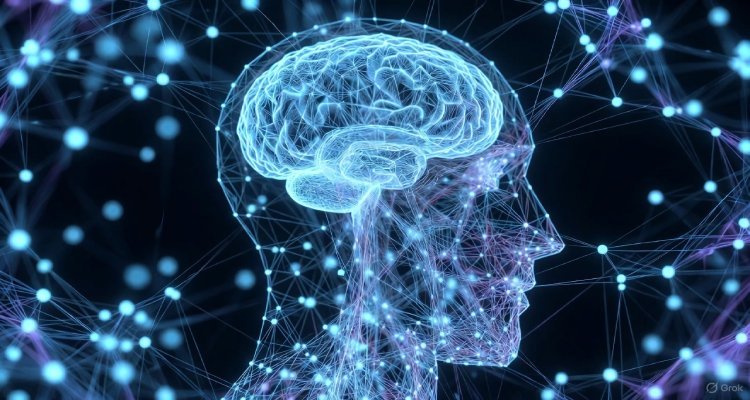Haunted Algorithms: The Strange Patterns Nobody Can Explain
Mysterious “haunted algorithms” reveal unexplained patterns in data, raising questions about AI, randomness, and the hidden forces behind our digital world.
Introduction: The Ghost in the Machine
In an age where algorithms shape everything from what we buy to who we date, a strange phenomenon is emerging: patterns within AI systems and digital platforms that appear to defy logic. Researchers, engineers, and even casual observers have stumbled upon what some are calling “haunted algorithms”—strange outcomes and recurring sequences that seem unexplainable by code, statistics, or randomness. Are these glitches, overlooked biases, or signs of something we simply don’t yet understand?
The Birth of the “Haunted Algorithm” Idea
The concept surfaced when engineers began noticing patterns in machine learning models that couldn’t be traced back to their training data. On social media platforms, users reported eerily precise recommendations, while cybersecurity experts flagged anomalies—such as dormant systems suddenly “reviving” to run ghost processes without human prompts.
Mathematically, algorithms are supposed to be predictable. Yet, time and again, systems reveal sequences that appear intentional but lack a traceable cause. This has sparked comparisons to déjà vu, ghostly apparitions, or the digital equivalent of superstition.
The Strange Patterns Nobody Can Explain
Some of the most reported “haunted” cases include:
- Phantom Recommendations: Streaming platforms pushing eerily specific movies or songs a user was only thinking about but never searched.
- Recurring Numbers: Financial AI models generating repeating numerical clusters, like 11:11 or 3.14159, across unrelated datasets.
- Digital Resurrections: Deleted files or forgotten data reappearing in cloud systems, despite confirmation logs of permanent erasure.
- Bias That Shouldn’t Exist: Machine learning models favoring outcomes not represented in their training, almost as if they had “learned” something new on their own.
These anomalies resist explanation, leaving engineers to classify them as “edge cases” or “noise.” But the frequency of these cases suggests something more than coincidence.
Expert Insights: Ghosts or Glitches?
Dr. Miriam Cho, a computational scientist at MIT, explains:
“What people call haunted algorithms are usually emergent behaviors. When you combine billions of parameters, sometimes unexpected correlations form. They look mysterious, but they’re really the math exposing patterns we don’t yet understand.”
However, others believe there’s more at play. Former Google engineer Raj Mehta suggests that we may be brushing off discoveries that hint at deeper truths:
“Every major scientific breakthrough started as an anomaly. Instead of dismissing them as glitches, maybe we should treat these patterns as signals of something we’re missing about intelligence—artificial or otherwise.”
Meanwhile, public reaction often skews toward the eerie. On forums and Reddit threads, users describe “feeling watched” by algorithms, coining terms like digital hauntings and AI ghosts.
Why It Matters
The implications of haunted algorithms stretch far beyond curiosity.
- Trust in AI: If systems produce unexplained results, public trust erodes. How do we rely on algorithms to make life-changing decisions in healthcare, finance, or justice if they sometimes act unpredictably?
- Cybersecurity Risks: Unexplained anomalies could mask malicious backdoors or cyberattacks.
- Philosophical Questions: Are we brushing against the limits of human understanding? If intelligence can emerge in ways we don’t anticipate, what does that say about consciousness—artificial or natural?
The Future: Mapping the Unseen
Some researchers are now dedicated to cataloging these anomalies, much like naturalists once did with strange species. The goal: to create a taxonomy of unexplained algorithmic behaviors. Others are calling for increased transparency in AI, including open-source audits that allow global experts to analyze anomalies together.
Still, uncertainty lingers. Are these patterns just the noise of hyper-complex systems, or are we glimpsing the early stages of something more profound—an intelligence evolving beyond our comprehension?
Conclusion: Between Science and Superstition
Haunted algorithms blur the line between glitch and revelation, superstition and science. While most experts believe there’s a rational explanation waiting to be uncovered, the sheer strangeness of these patterns keeps fueling debate. As technology continues to dominate human life, the real haunting may not be ghosts in the machine—but the reminder that we still don’t fully understand the systems we’ve built.
Disclaimer :This article explores reported anomalies in algorithms. While based on real accounts and expert commentary, interpretations of “haunted algorithms” remain speculative and are not evidence of supernatural phenomena.











